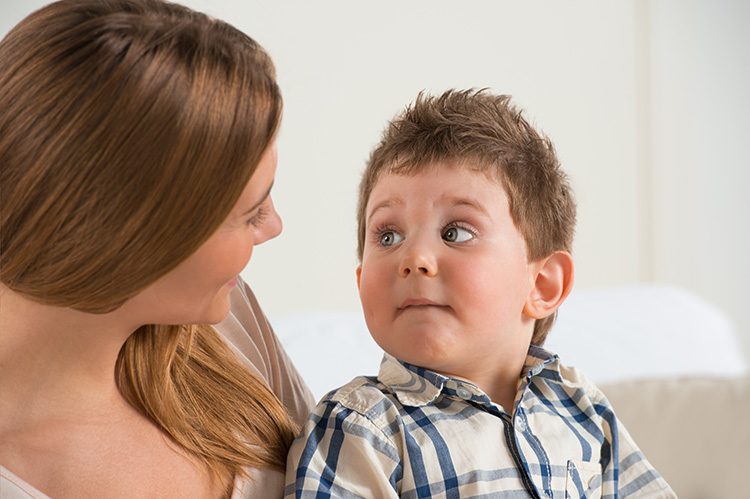How Do I Know if My Child Is Stuttering?

What is Dysfluency?
When a child’s speech is bumpy and not smooth, we refer to that as “dysfluent” speech. “Dysfluent” speech is characterized by repetitions of sounds, part words, whole words, prolongations of sounds, or even blocks (the word seems stuck). There are two types of dysfluency: 1) stuttering, and 2) normal language based dysfluency.
What is Stuttering?
Stuttering is a genetic speech disorder which results in dysfluent speech which is often persistent for the person’s whole life (unless treated). Because it is genetic, there is often a family history of stuttering (can be on mother or father’s side of the family).
Some characteristics of stuttering
- begins between 2-4 years of age
- fluctuates in severity (for example, more likely when child is anxious, excited or tired)
- is persistent (does not disappear for months at a time)
- is 4 times more likely among males
- there is often a family history of stuttering is present
- includes many different types of dysfluencies: repetitions, prolonging sounds, blocking on words
- may be associated with physical characteristics such as eye blinking, head or hand movements
What is Language-based Dysfluency?
Language based dysfluency refers to bumpy speech which some children experience when they are going through an expressive language growth spurt. This occurs because the child’s cognitive skills are growing at a rapid rate and the messages which they wish to convey become much more complex. This manifests itself as a rapid change in complexity of vocabulary, sentence length or both.
Some characteristics of language-based dysfluency
- begins between 2-4 years of age
- is rarely associated with a family history of stuttering
- does not last more than 6 months (typically not more than 3 months)
- types of dysfluencies can include repetitions of sounds, part words and whole words
- is rarely associated with physical characteristics such as eye blinking, head or hand movements
So we can see that there is some overlap between stuttering and language based dysfluency. Both have an onset in children’s speech between the ages of 2-4, and both are characterized by similar types of dysfluencies: repetitions of sounds, part words or whole words.
So how do we decipher whether a child is actually stuttering or going through a period of language based dysfluency?
The short answer: we wait until we have heard it for at least 3 months. The best way to determine if it is actually stuttering is to record the start date of the child’s dysfluency and then wait 3 months. If the dysfluency stops suddenly and disappears for weeks or months, we can attribute the dysfluency to reasons which are language-based. NOTE: a child can have more than one bout of language based dysfluency, usually separated by a few months. But again, each bout rarely lasts for more than 3 months. If on the other hand, a child is still dysfluent after 3 months, without any breaks, we then attribute the dysfluency to actual stuttering.
Won’t an Assessment Give Me the Answer?
Some parents request an assessment from a speech-language pathologist to speed the process. They want a definite answer of whether or not their child is actually stuttering because it can be so difficult to wait the 3 months. Unfortunately, in most cases, even the most experienced speech-language pathologist will not be able to differentiate between real stuttering and language based dysfluency at that age. They present extremely similar at time of onset. Therefore, an assessment cannot give you that definitive answer that you are hoping for.
Is there Harm in Waiting 3 Months to Treat Stuttering?
No. Even in situations where we have established that the child is actually stuttering and there is a definite family history of stuttering, we still wait to start therapy if they are under 3 ½ years old. We highly recommend a fluency therapy called Lidcombe Program. The optimum age for starting Lidcombe therapy is between the ages of 3 ½ – 6 years old. Waiting 6 months or even a year does not make the stuttering more difficult to treat. In fact, waiting till the child is 4 years old can make the therapy most effective!
What Can I Do While Waiting?
If you’re waiting to determine if your child is actually stuttering, the best thing you can do during these few months is be a good listener.
Here is a list of “Do’s”
- do look at your child and give him your eye contact when he is talking
- do wait for your child to finish his sentence and respond to his sentence
- have a neutral expression on your face when he/she is going through a period of dysfluency
Here is a list of “Don’ts”
- don’t interrupt your child or try to finish his/her sentence!
- don’t tell your child to slow down or take a deep breath or start over
- don’t have a pained look on your face when your child is going through a period of dysfluency
- don’t avoid the topic of dysfluency if your child wants to talk about it. You can have an open conversation with your child, explaining that having bumpy speech can be a normal part of growing up.

In all my 18 years of experience being a speech-language pathologist, there are few speech and language disorders/delays that cause more stress and worry among parents than stuttering. In some rare cases, if a parent is so anxious about their child’s dysfluency that it is causing them health concerns or lack of sleep, we can start therapy earlier. However, there are so many cases in which the dysfluency that a parent is hearing in their preschooler’s speech is simply language-based dysfluency, we do not want to provide intervention when it is not needed. If we wait the designated period of 3 months and we determine that the child is actually stuttering, we can start Lidcombe therapy with confidence that the intervention is warranted.
Therapy for Preschool Stuttering
If you are a parent of a child who has experienced dysfluent speech which has persisted for more than 3 months, and your child is at least 3 ½ years old, we can now consider starting therapy. Currently the therapy technique which yields the best results for preschoolers who stutter is the Lidcombe Program. Lidcombe therapy is very positive and fun for a child! It is a behavioural treatment which focuses on positive aspects of speech while engaging in fun activities. Parents are trained by the speech-language pathologist to administer the therapy so progress is quick and results are long lasting. Most children look forward to their treatment sessions and the results are amazing!
If your child is under the age of 7 and is stuttering, seek a speech-language pathologist who is certified in the Lidcombe Program. Ensure that your therapist has been formally trained and is certified and not just “familiar” with the Lidcombe Program. Helping children achieve smooth, fluent speech is a passion of mine. I offer free consultations by phone anytime. If after reading this, you still have questions, or you are worried about your child’s fluency, I would love to hear from you!
